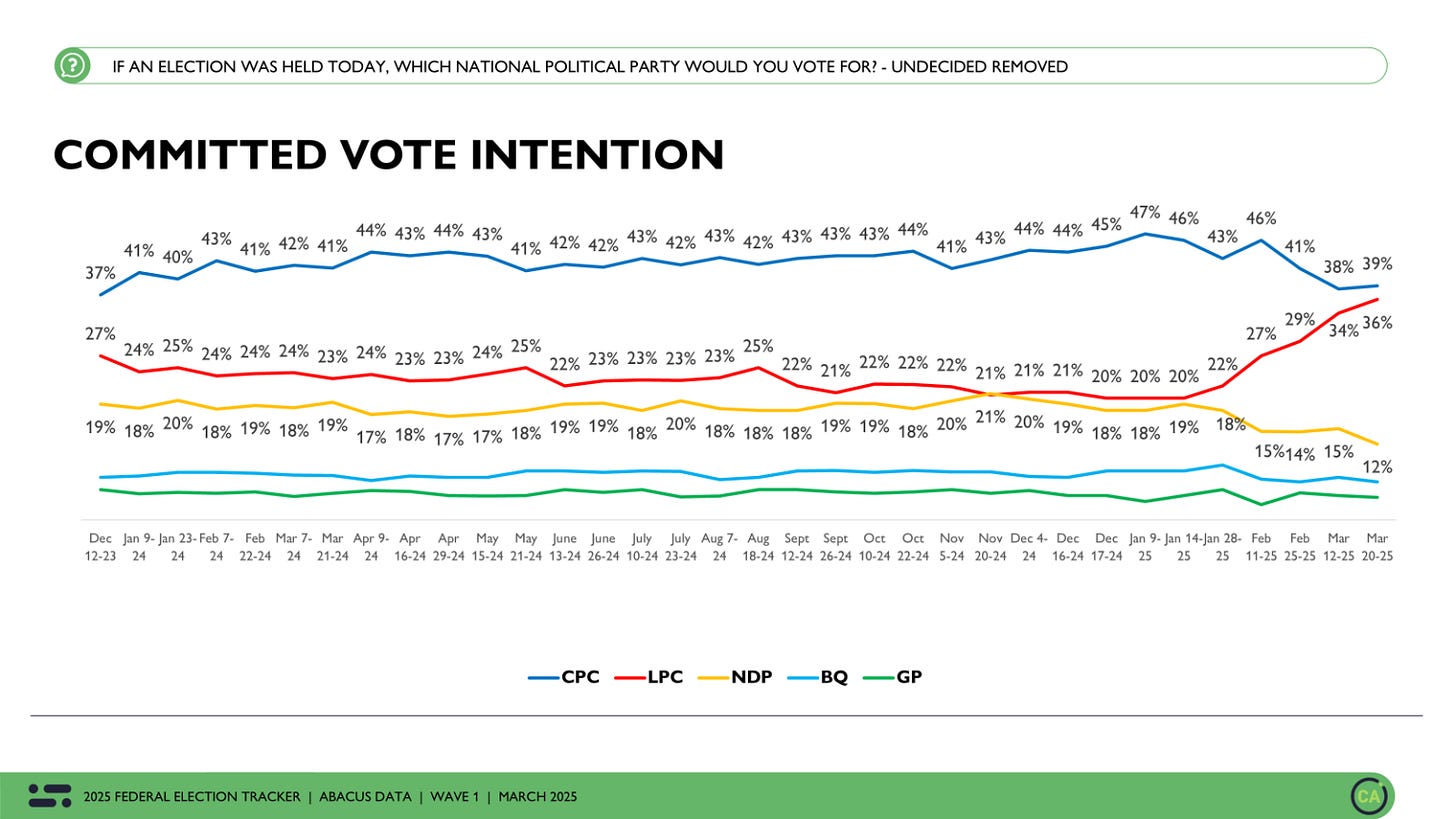On the limited utility of war-room spin
Underway for weeks, the federal election campaign has officially begun, and the hulking shadow of Donald Trump will be hanging over everything.
Mark Carney, the Liberal Party’s annointed successor to Justin Trudeau, has finally seen to the formal dissolution of Parliament, which has been padlocked anyway since Team Trudeau launched Carney’s drawn-out succession on January 6.
Carney will run in the Ottawa riding held by Liberal MP Chandra Arya, whose long-shot candidacy challenging Carney for the Liberal leadership was mysteriously revoked two months ago. Arya’s candidacy as the Liberal incumbent in Nepean was revoked two days ago, also without explanation, but we know why now.
We’ll be going to the polls on April 28. Finally. Carney’s been on the campaign trail for quite a while now, in one of the most extravagant election campaigns ever, funded by taxpayers, no less. Such amazing photo-oppery.
Here are the latest numbers.
We don’t want whoever Trump wants, but who does Trump want?
That’s a reasonable question, so far as it goes. After all, when he’s not carrying off a kind of constitutional putsch at home and realigning America with Vladimir Putin and Xi Jinping abroad, Donald Trump has more than once expressed a determination wreck Canada’s economy to force us to submit to annexation as the 51st American state.
The latest out of the Conservative war room: Trump endorses Carney. This is about as silly as the early-innings Liberal spin that Trump had “endorsed” Pierre Polievre. Both the Liberals and the Conservatives can rely on a shred of sort-of evidence to support their claims and counterclaims, though. So, a breakdown.
He loves me. He loves me not. He loves me. He loves me not.
It started the very day Trudeau announced he was stepping aside. Team Trudeau had sunk to 16 percent in the national polls. Most of Trudeau’s own parliamentary caucus wanted him gone, even. Deputy Prime Minister Chrystia Freeland had resigned in disgust, earning her the enmity of the party machine that would go on to steamroll over her on Carney’s behalf.
Here’s how it started.
In a January 6 conversation with Republican podcaster Hugh Hewitt, Conservative leader Pierre Poilievre’s name came up. Hewitt: “I think Trudeau might resign today. Are you looking forward to working with Pierre Poilievre, the new guy?” Trump: “I am. I am, if that’s what happens. Certainly, it will be very good. Our views would be more aligned, certainly.”
Poilievre was having none of this. After all, in Canada, if you’re the subject of so much as a benign reference in one of Trump’s regularly televised descents into mobster dementia, you’re as radioactive as Chernobyl. So, the next day, Poilievre said: “Canada will never be the 51st state. Period. We are a great and independent country. . .
“I will fight for Canada. When I am Prime Minister, we will rebuild our military and take back control of the border to secure both Canada and the U.S. We will take back control of our Arctic to keep Russia and China out. . . In other words, we will put Canada First.”
This displeased Trump quite a bit. Later that day, in his first use of the term “economic force” as the method he intended to employ to subdue Canada and acquire a new American state, Trump responded to Poilievre’s remarks this way: “Then maybe he won’t win. But maybe he will. Listen, I don’t care what he says.”
What a difference a day makes, right?



